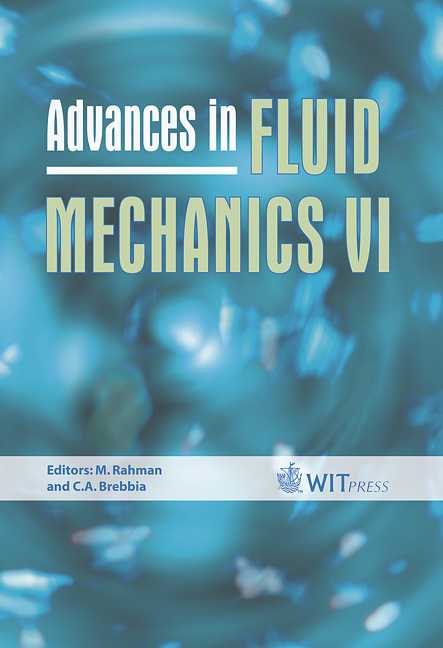Rear Shock Formation In Gravity Currents
Price
Free (open access)
Transaction
Volume
52
Pages
11
Published
2006
Size
431 kb
Paper DOI
10.2495/AFM060441
Copyright
WIT Press
Author(s)
S. J. D. D’Alessio, J. P. Pascal & T. B. Moodie
Abstract
Considered in this study is the gravity driven flow of a two-fluid system arising from the motion of a heavy fluid in a rectangular channel having a flat bottom. The mathematical model is based on shallow-water theory in connection with a two-layer Boussinesq fluid. By means of a scaling argument, it can be shown that for small density differences the gravity current can be successfully modelled by a two-by-two hyperbolic system in conservation form together with a pair of algebraic relations. This reduced system is referred to as the weak stratification model. A weakly nonlinear analysis is performed on this weak stratification model to elicit information concerning the formation of a rear shock which may form on the back side of the head of the gravity current. Predictions made by the analytical technique are then verified by numerical simulations. Keywords: shallow-water theory, Boussinesq approximation, two-layer model, hyperbolic system, multiple scales analysis. 1 Introduction A gravity current refers to the flow of one fluid within another which is driven by the density difference between these two fluids. Gravity currents play an important role in many known natural phenomena as well as human-related activities ranging from turbidity currents to the accidental release of industrial pollutants. Although it is obviously the case that the initial flow following the release of a gravity current of finite volume is a complex three-dimensional unsteady flow, soon after release the current will have spread sufficiently that its length is very much greater than its thickness. The thickness h(x, t) will at this stage be slowly
Keywords
shallow-water theory, Boussinesq approximation, two-layer model, hyperbolic system, multiple scales analysis.





